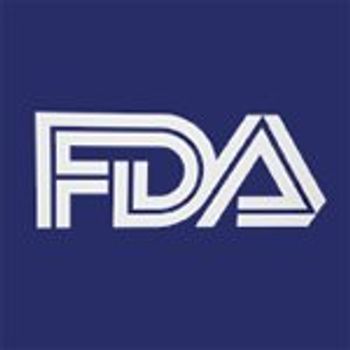
A simple quality improvement initiative involving an improved patient access center and patient education resulted in a 60% reduction in the use of ER visits in oncology patients.

Your AI-Trained Oncology Knowledge Connection!


A simple quality improvement initiative involving an improved patient access center and patient education resulted in a 60% reduction in the use of ER visits in oncology patients.

ASCO updated guidelines, recommending that higher-risk premenopausal ER-positive breast cancer patients receive ovarian suppression with adjuvant endocrine therapy.

Everyone wants their doctor to be compassionate, but what about leadership? Cancer patients may be looking for these seven traits of leadership in their oncologists.

A panel of experts at the ASCO have reviewed and endorsed Cancer Care Ontario’s guideline on Active Surveillance for the Management of Localized Prostate Cancer.

This slide show includes some of the top highlights from the 2016 ASCO Cancer Survivorship Symposium, including studies on whether lymphoma survivors receive the recommended care, how personalization improved survivorship care plan adherence among breast cancer patients, and more.

A number of clinical and sociodemographic factors, including age and gender, were found to be independently associated with fatigue and depression among cancer patients who were treated with hematopoietic cell transplantation.

Some adult-onset cancer survivors have an increased risk of developing cardiovascular disease later in life compared to noncancer controls.

The 2012 change in guidelines regarding PSA testing for prostate cancer had a different effect on testing rates depending on which physician specialty was doing the testing.

ASCO has published a guideline on biomarker use to guide decisions for adjuvant systemic treatment for women with early-stage, invasive breast cancer.

This slide show includes highlights from the 2016 ASCO Gastrointestinal Cancers Symposium, including studies on pancreatic cancer patients treated at a high-volume center, Lutathera in patients with midgut neuroendocrine tumors, and more.

The FDA has approved the first single-dose intravenous NK1 receptor antagonist, fosaprepitant dimeglumine (Emend), for the treatment of nausea and vomiting that can accompany the use of moderately and highly emetogenic chemotherapy.

Despite clinical trial evidence and recommendations that certain older breast cancer patients can forego radiation therapy after lumpectomy, most older patients continue to receive radiation therapy, according to a new study.

The use of a standard yearly physical examination to screen for thyroid cancer among high-risk survivors of childhood and young adult cancers resulted in a negative predictive value of 100% for clinically relevant thyroid cancer and a significant cost savings compared with regular ultrasound screening.

There was no significant difference in the decline in IQ score over time between pediatric brain tumor patients treated with either photon radiation or proton beam radiation therapy, according to a new study.

Survivors of thyroid cancer are at an increased risk for developing a second cancer, according to the results of a recently published study.

More than 15% of men and women over the age of 65 may have received breast or prostate cancer screening not recommended by current guidelines.

Breast cancer survivors with estrogen receptor (ER)-positive disease had a lower annual risk of recurrence within the first 5 years after diagnosis, though these patients then had higher rates than ER-negative patients after 5 years.

A short-course of preoperative radiation therapy plus consolidated chemotherapy was shown to be as effective as standard preoperative chemoradiation in the treatment of locally advanced rectal cancer.

Regular ultrasound surveillance of the thyroid revealed that about 7% of adult childhood cancer survivors who had radiation to the head or neck subsequently developed thyroid cancer.

Adult survivors of childhood astroglial tumors with significant vision loss are more likely to suffer various psychological and socioeconomic impacts such as unemployment.

How arduous is it to transform a typical practice into a community oncology medical home? Let’s compare the characteristics of the ideal community oncology medical home as defined by Innovative Oncology Business Solutions with our practice’s current habits.

A published statement by ASCO lays out concerns about the ways in which clinical pathways, a system designed to improve the quality of care cancer patients receive, are being utilized within the US healthcare system.

In this Q&A we examine Right-to-Try drug laws and discuss tips for clinicians with terminally ill patients who have exhausted all their therapy options.

Most adolescent and young adult survivors of Hodgkin lymphoma did not receive the recommended care within the first year post-treatment, according to a study.

A randomized trial showed that personalized care plans and one-on-one counseling can improve adherence to survivorship plans among low-income breast cancer survivors.

An Egyptian study found that bladder cancer patients who underwent radical cystectomy had better local recurrence-free survival with adjuvant radiotherapy and chemotherapy combined, compared with chemotherapy alone.

The use of a reduced preparation CT colonography increased participation in colonography as a method of population screening for colorectal cancer, according to the results of a large Italian study.

A three-arm trial found that one hypofractionation radiotherapy regimen was non-inferior to conventional RT for intermediate-risk prostate cancer patients.

A study of female cancer survivors found that almost half experience CIPN symptoms years after completing their cancer treatment.

A hypofractionated radiotherapy regimen was found to be noninferior to conventional fractionation for low-risk prostate cancer patients in a new randomized phase III trial.